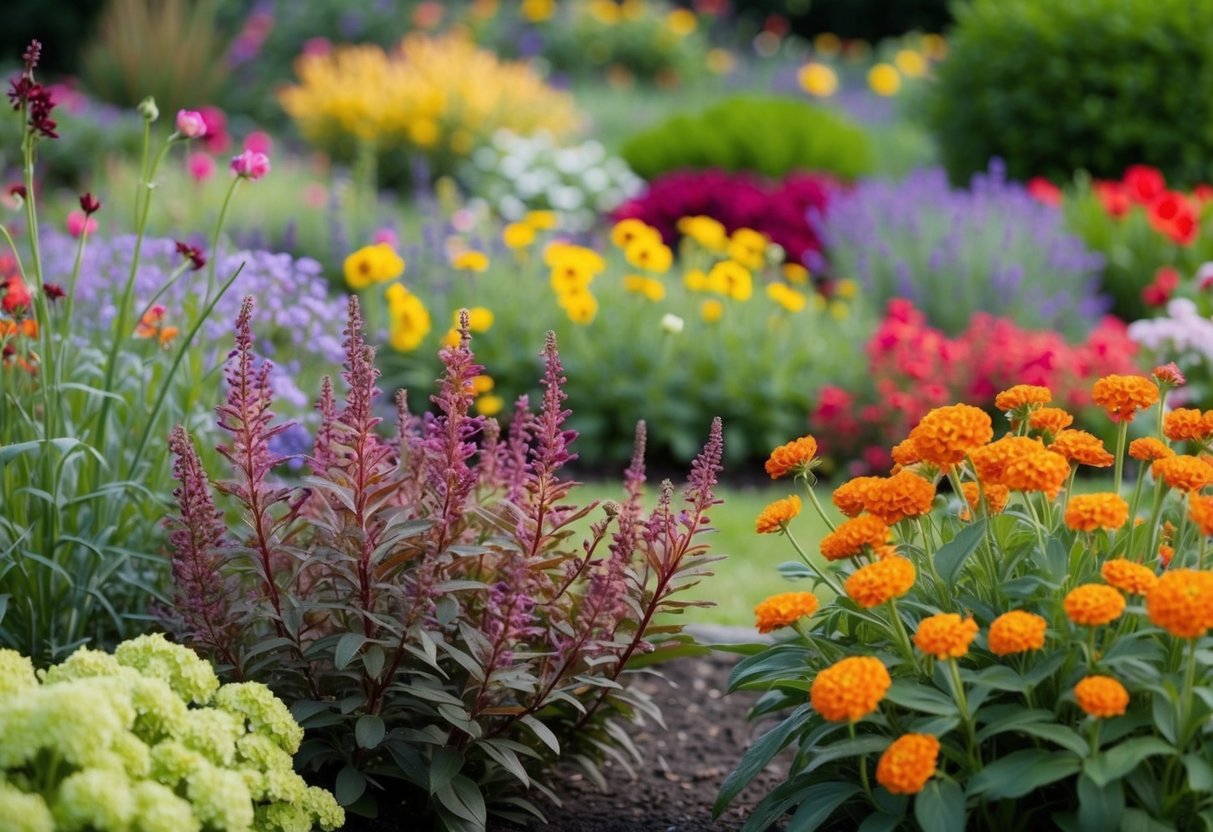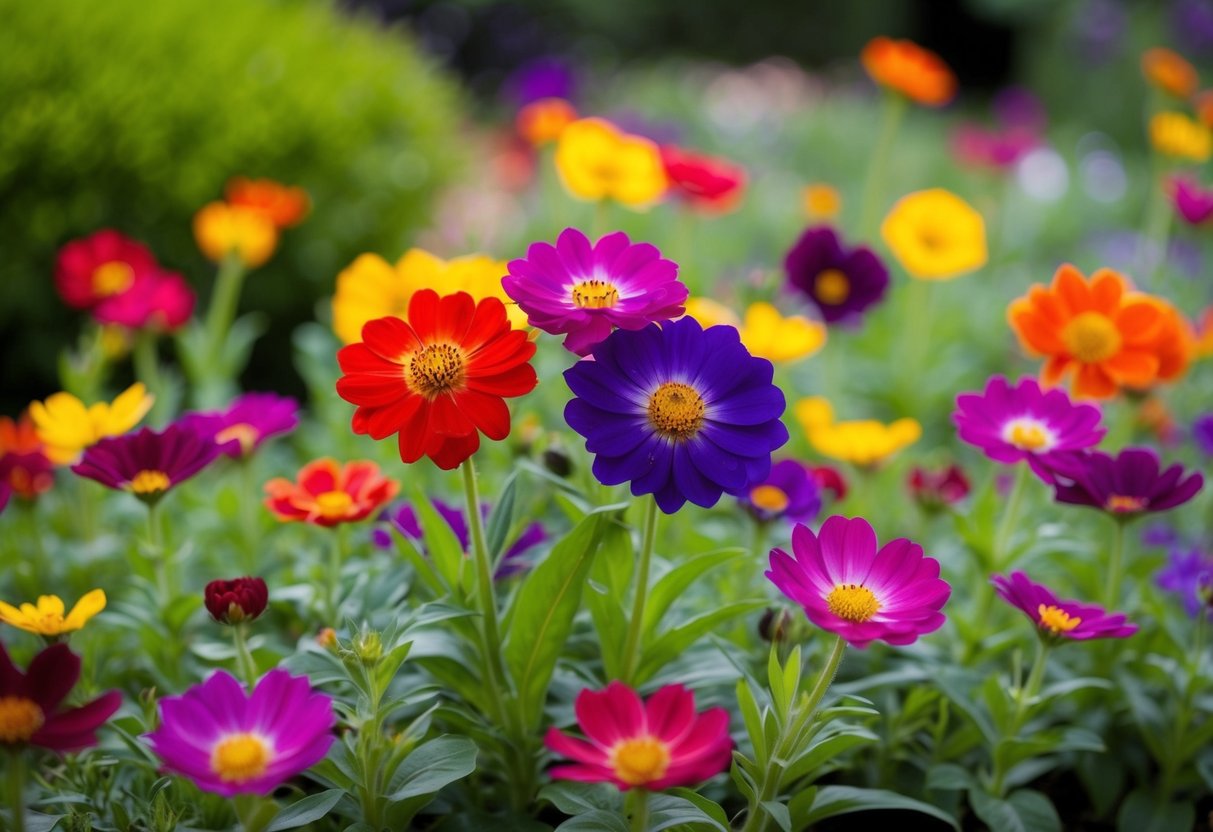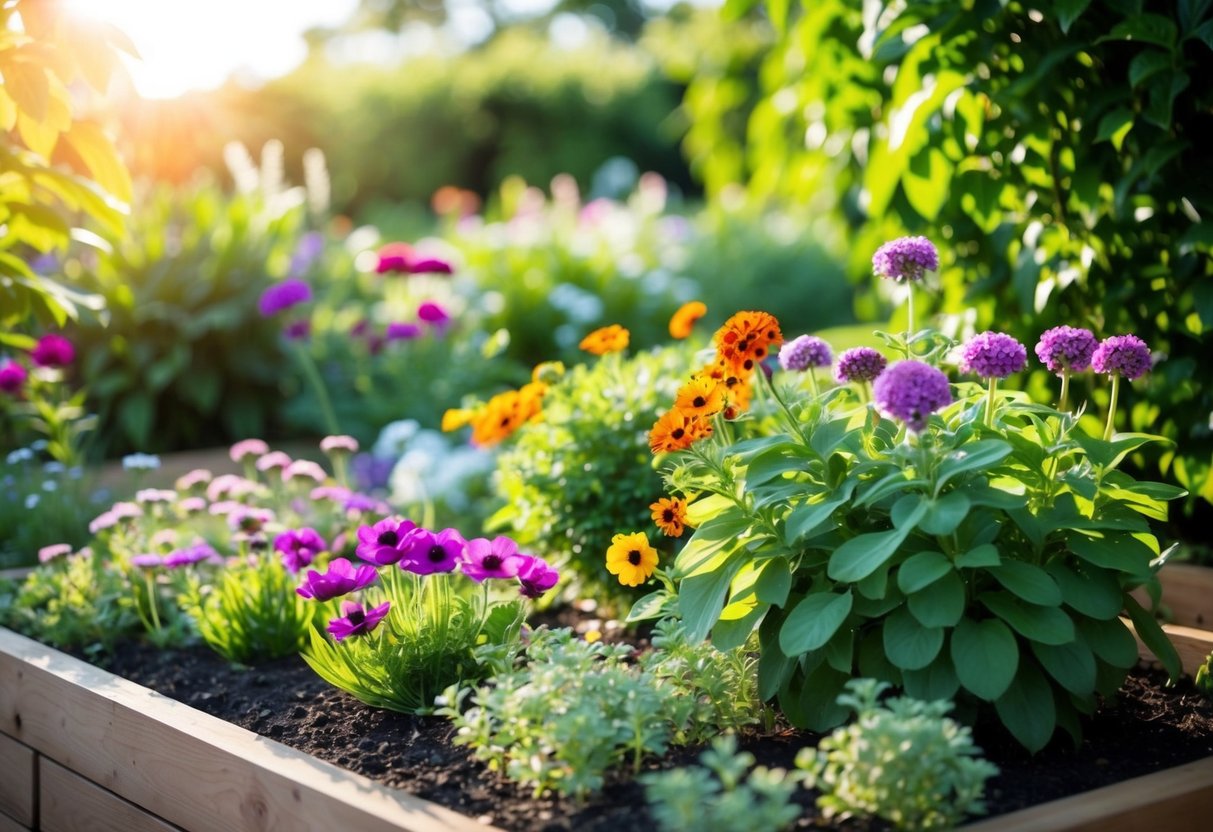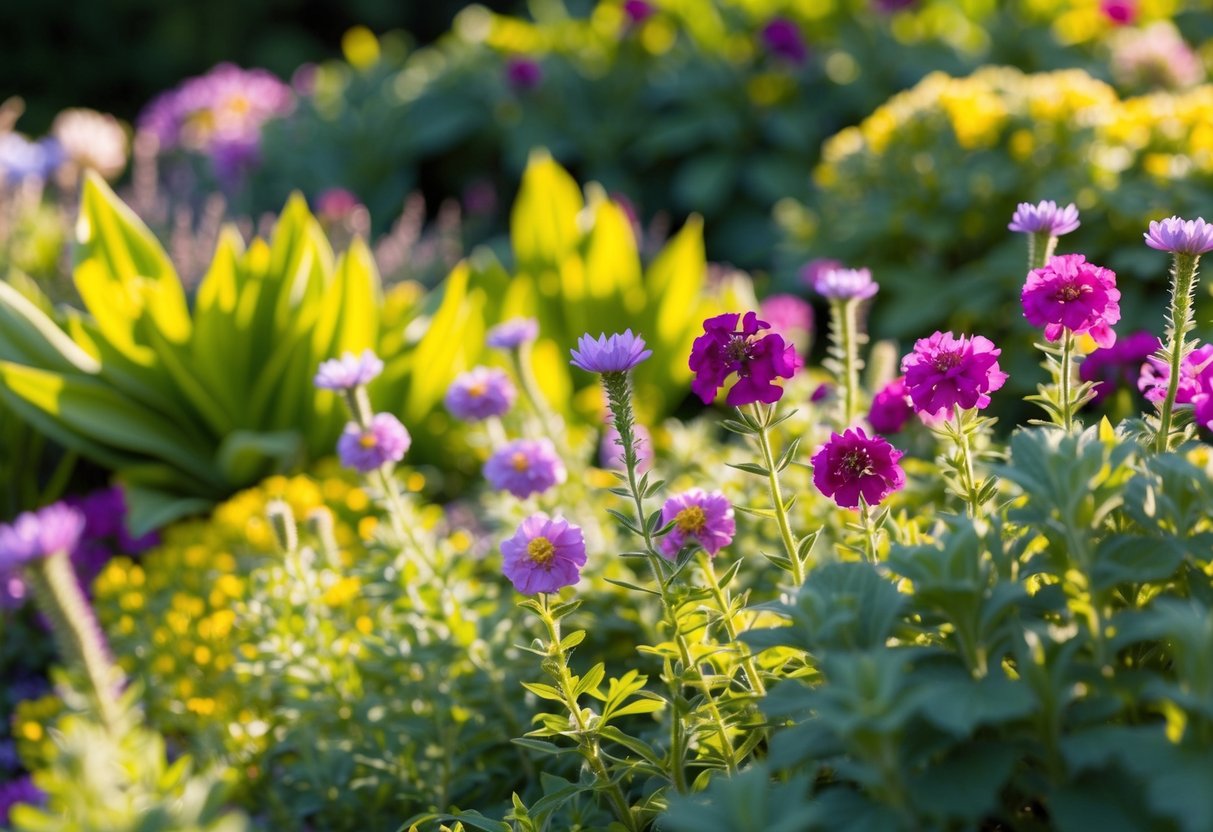What is the Lowest Maintenance Flower? A Gardener’s Easy Choice
When you start gardening, you might wonder, what is the lowest maintenance flower that can brighten your outdoor space without much fuss? One popular choice is the hardy zinnia, which blooms all summer long with minimal care. These flowers thrive in full sun or shade and stand out as a top pick for easy-to-grow options.

If you’re leaning toward perennials, consider the beautiful Rudbeckia. Known for its bright yellow blooms, this plant is not only low-maintenance but also drought-tolerant, making it perfect for beginner gardeners.
For more options, you might want to explore lists of low-maintenance perennial flowers that suit your climate and gardening style.
Whether you’re starting an entire garden or just adding a few splashes of color, choosing the right flowers can make a big difference. Incorporating easy-to-grow flowers ensures your garden stays vibrant with less effort. With a variety of options like zinnias and Rudbeckia, you can enjoy a flourishing garden season after season.
Identifying Low-Maintenance Flowers

Low-maintenance flowers are great choices if you want beautiful blooms without much work. Many of these plants are perennials, which means they come back each year. Below, we explore the key characteristics and benefits of these easy-care flowers.
Characteristics of Low-Maintenance Perennials
Perennial flowers are a top pick for low-maintenance gardens. They usually require little watering, making them perfect for areas with limited rainfall.
Many of these plants, like zinnias and coneflowers, are drought-tolerant, so they thrive with minimal care.
These beauties often resist pests and diseases, adding to their easy-care appeal. Some, such as the spider flower, even reseed themselves, giving you a new batch of blooms year after year.
Perennials are hardy, surviving in different climates and seasons, and they usually need less fertilizer than annuals.
By focusing on these characteristics, you can have a vibrant garden that takes care of itself. Enjoy the blooms without extra effort by choosing the right perennials.
Benefits of Perennial Plants
Perennial plants bring many benefits, especially in terms of time and cost savings. Once planted, they return every season, reducing the need for frequent replanting. This makes them more economical over time compared to annuals. You save money on seeds and plants for the garden each year.
Their longevity also means you invest less in soil preparation and garden equipment.
Additionally, perennials like plantain lilies adapt well to shade and sun, making them versatile in different conditions.
Beyond economics, these plants offer environmental benefits. Many are pollinator-friendly, helping bees, butterflies, and other beneficial insects. They also aid in improving soil health by reducing erosion and adding organic matter. Enjoy a beautiful, eco-friendly garden with the lasting benefits of perennials.
Top Low-Maintenance Perennial Flowers

Low-maintenance perennial flowers offer beauty and resilience with minimal effort. Some popular choices include coneflowers, daylilies, sedums, and hostas. Each has its unique charm and growing needs, perfect for busy or beginner gardeners.
Coneflowers (Echinacea spp)
Coneflowers are well-loved for their vibrant, daisy-like blooms and sturdy stems. They come in a range of colors, including pink, white, and purple. The purple coneflower is a particular favorite and can thrive in varying conditions.
Plant coneflowers in full sun and well-drained soil. They attract butterflies and bees, making them a great addition to pollinator-friendly gardens. These hardy plants are drought-tolerant once established, requiring little watering. Deadheading the flowers can encourage more blooms and help keep the plant looking tidy.
Daylilies (Hemerocallis spp)
Daylilies are known for their trumpet-shaped flowers and clump-forming growth. You can find them in a myriad of colors, such as yellow, orange, and red. They thrive in full sun to partial shade and adapt well to different soils.
One of their best features is their ability to withstand drought, making them easy to care for. Daylilies bloom in summer, providing color when many other plants have finished. They are resistant to pests and diseases, adding to their low-maintenance appeal. Dividing the clumps every few years can promote healthy growth.
Sedums (Sedum spp)
Sedums, or stonecrops, are succulent plants that are extremely low-maintenance. Their fleshy leaves store water, making them drought-tolerant. You can find them in various textures and colors, from green to deep burgundy.
Plant them in full sun and well-draining soil to prevent root rot. Sedums are perfect for rock gardens, borders, and even container gardening. They bloom in late summer to fall, with clusters of small star-shaped flowers. They attract pollinators like butterflies and bees. Besides occasional pruning of dead foliage, these plants require minimal care.
Hostas (Hosta spp)
Hostas are shade-loving perennials prized for their beautiful foliage. Their leaves range from deep green to blue-gray, often with stunning variegation. These adaptable plants can grow in various soil types and light conditions.
Hostas prefer partly shady areas, making them ideal for shaded garden spots. They are relatively pest-resistant, though you may need to watch for slugs. Hostas require minimal maintenance, apart from watering in dry spells. Their lush leaves provide excellent ground cover, reducing weed growth. You can also divide and transplant them to encourage robust growth.
Planting and Care Guide

When it comes to low-maintenance flowers, understanding their soil, sunlight, watering, and feeding needs is essential. Ensuring proper care keeps flowers like stonecrop, catmint, and tickseed thriving in your garden.
Soil and Sunlight Needs
Flowers like stonecrop and catmint prefer well-draining soil. You should ensure that your soil doesn’t retain too much moisture, as this might harm the roots. It’s also helpful to test the soil pH before planting. Aim for a slightly acidic to neutral range for most low-maintenance plants.
Sunlight is another key factor. For instance, stonecrop thrives in full sun, making it ideal for sunny spots in your garden. Catmint and tickseed also appreciate plenty of sunlight to grow their colorful blooms. Consider planting them in areas where they receive at least 6 hours of direct sunlight daily.
Watering and Feeding
Watering needs vary with each plant, but most low-maintenance flowers, like lenten rose and heuchera, prefer soil that is consistently damp but not waterlogged. Water deeply but infrequently to encourage deep root systems.
Feeding your flowers with a balanced fertilizer during their growing season can boost their health. A slow-release granular fertilizer is often a good choice for these plants. However, be mindful not to over-fertilize, as this can lead to excessive growth and fewer flowers.
Pruning and Deadheading
Pruning and deadheading are important to keep your garden looking tidy. For flowers like lenten rose, you should remove dead foliage and spent blooms as they appear. This helps direct energy toward new growth.
Deadheading is especially useful for flowers like catmint and tickseed. Removing faded blossoms can encourage more blooms throughout the season. Regular pruning keeps your plants healthy and encourages a bushy, vibrant display.
In flower beds, maintain a neat appearance by routinely checking for dead or damaged stems across your low-maintenance flowers. This not only improves the plant’s look but also discourages pests and diseases.
Designing With Low-Maintenance Flowers

Using low-maintenance flowers in your garden can transform your space into a colorful and lively area without too much effort. Vibrant flowers like garden phlox and shasta daisies add charm, while others bring interesting texture and sustainable growth to your landscape.
Color Coordination and Textures
Playing with color and texture can make your garden visually appealing. Vibrant flowers like garden phlox provide bold colors and are great for adding pink and purple shades to your garden. Shasta daisies offer a clean, fresh white color that pairs well with almost any other flower, making them versatile choices.
Astilbe adds a soft, feathery texture that contrasts with the smooth petals of other flowers. The unique textures of bleeding heart plants can also catch the eye, creating a focal point in your garden. Mixing these elements ensures a dynamic garden all year round.
Creating a Sustainable Garden Landscape
Choosing low-maintenance flowers is not only about aesthetics but also sustainability. Many of these blooms, like astilbe and bleeding heart, are perennials, which means they return year after year, reducing the need for replanting. This makes your garden more sustainable and less labor-intensive.
When planning your garden, think about water needs. Shasta daisies and other drought-tolerant plants can help you save water and thrive in drier conditions. Designing with these considerations supports an eco-friendly garden that flourishes with minimal intervention.
Seasonal Considerations for Perennial Gardens

Perennial gardens can offer vibrant colors and textures year-round. Choosing the right plants can make your garden lively from spring to winter, with blooms and interesting foliage even in the colder months.
Spring and Summer Blooms
In spring, perennials like black-eyed Susans and asters begin to show their bright colors. Black-eyed Susans have daisy-like flowers that pop with gold and orange. They pair well with blue asters, creating a cheerful contrast. Both are hardy and easy to grow.
By summer, add rudbeckia and yarrow. Rudbeckia boasts vibrant yellows and oranges, while yarrow adds clusters of tiny flowers. Together, they provide a full, lush look. Also, helenium blooms late in the summer, providing warm tones that extend your garden’s beauty.
Fall and Winter Interest
As fall arrives, look for perennials that offer more than just flowers. Helenium offers late blooms into the fall, while asters continue to contribute with their persistent color. These plants help maintain interest as temperatures drop.
For winter, focus on texture and form. Evergreen perennials with unique foliage can stand out against the drab winter landscape. Some perennials also leave interesting seed heads or stems that add architectural interest.
By thinking ahead, you keep your garden appealing even when most plants have gone dormant.







